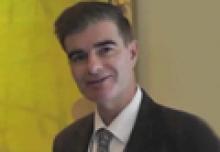SAN FRANCISCO—Within the headache community, desperate patients have tried just about everything for relief. Patients have been using cannabis for headache for several decades, and more recently it has been suggested that hallucinogens may induce remission of cluster headache. At the Headache Cooperative of the Pacific’s Seventh Annual Winter Conference, Brian E. McGeeney, MD, MPH, discussed the use of cannabinoids and hallucinogens for headache. Dr. McGeeney is an Assistant Professor of Neurology at Boston University School of Medicine.
Marijuana for Migraine
Patient testimonials may abound, but as far as evidence-based medicine goes, “there are no blinded studies for the use of cannabinoids for headache,” Dr. McGeeney pointed out. The use of cannabinoids for pain started in the 1970s. A short paper in the early 1970s in Headache described what was essentially a withdrawal headache, “which you can certainly get, especially with the daily use of cannabis.”
Goadsby et al demonstrated that the endogenous cannabinoid receptor ligand anandamide, which is the most well-known endogenous cannabinoid, is able to inhibit dural blood vessel dilation from electrical stimulation, administration of calcitonin gene-related peptide and nitrous oxide, or capsaicin administration. This inhibition is reversible. “This goes in some way toward providing a theory of how this [drug] may work for headache or migraine,” Dr. McGeeney said. “Cannabinoid receptors—CB1 and CB2—are located throughout the CNS and even in the peripheral nervous system. Cannabinoid receptors are 10 times more prevalent than opioid receptors.”
In the brain, cannabinoid receptors are found not just in the cortex, but in deep brain structures as well. “And if you think it’s going to work in headache, it is probably going to have a role in particular in the brainstem,” said Dr. McGeeney.
One theory is that the transmission of the trigeminal impulse of the first- and second-order neurons can be modulated by descending influences that can be either excitatory or inhibitory. Some evidence suggests that cannabinoid agonists may affect transmission along the trigeminal nerve. “And that is a plausible theory as to why it may work in headache,” Dr. McGeeney said. “Patients tell me that Cannabis indica is more likely to give them headache relief than other types.”
Hallucinogens and Headache
“There is some truth to claims that psilocybin works to abort a cluster headache,” Dr. McGeeney said. “But generally, the use of psilocybin in cluster headache patients is more to induce a remission of repeated attacks, not to treat an acute attack.” The reason why psilocybin may be helpful is its similarity to serotonin. The indole ring is a key part of the serotonin agonist, and the chemical structures of serotonin, tryptophan, and most hallucinogenic compounds are similar.
Hallucinogenic compounds that cluster patients may be using include lysergic acid amine (LSA)–containing seeds, the psilocybin mushroom, and lysergic acid diethylamide (LSD), which is much more difficult to obtain.
The connection between hallucinogens and cluster headache began in 1998 when a Scottish man posted a provocative comment on a cluster headache website. He said, “I’ve been getting cluster headaches for many years, and I missed my fall cycle. And the only thing I’ve done differently is the recreational use of LSD. I wonder whether that has something to do with it.” This was met with skepticism in the cluster community. But gradually, more people started to pursue hallucinogens to see whether they made a difference.
The first things they used were seeds—Rivea corymbosa, Hawaiian baby woodrose, and certain strains of morning glory seeds—which have hallucinogenic alkaloids in them. “It is perfectly legal in the United States to buy these seeds, to sell them, and to cultivate them, but it is not legal to ingest them or to soak them in water and then drink the water, which is rather disgusting and easily induces nausea and vomiting,” said Dr. McGeeney. Cluster patients are using these seeds to try to induce a remission. Albert Hoffman, of LSD fame, analyzed the ergot in those seeds—ergine and isoergine.
The use of hallucinogens among cluster headache patients came to light with a 2006 paper by Sewell et al in Neurology. The authors surveyed 53 cluster patients, 21 of whom had chronic cluster headache. Half of those who used psilocybin said that it completely eliminated their attacks. “In speaking to many of these patients over the years, that elimination can be anywhere from days to months. But it is not rare to come across someone who says that psilocybin will eliminate their attacks for a couple of months,” Dr. McGeeney said.


